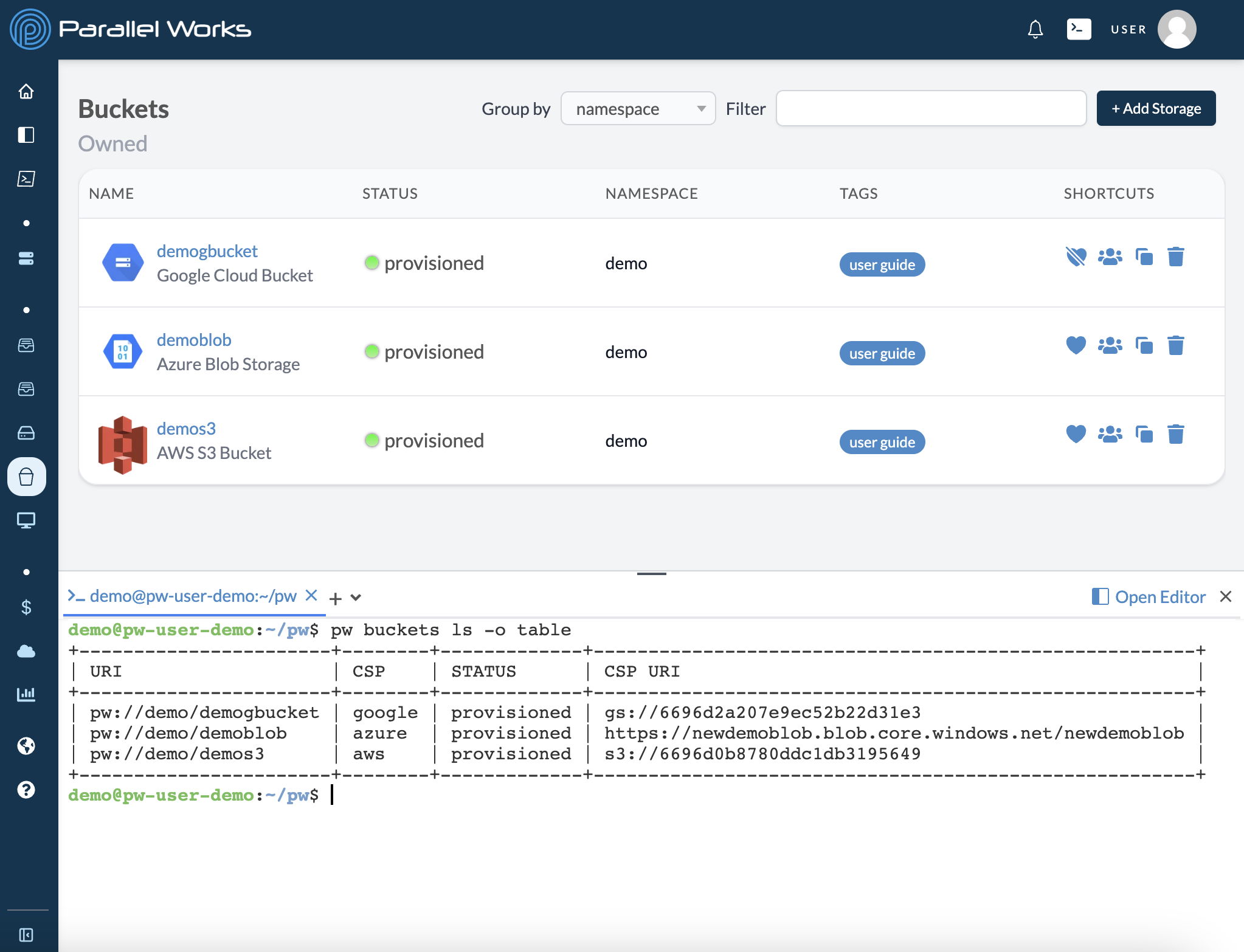About the PW CLI
The Parallel Works command-line interface (PW CLI) offers a streamlined way to interract with your compute and storage resources from a terminal.
Installation
By default, the PW CLI is pre-installed on user workspaces, cloud clusters, and existing clusters. You can open a terminal on the ACTIVATE platform and immediately use any PW CLI command.
For existing clusters, the PW CLI is installed in a folder named pw inside your home directory.
If you'd like to install the PW CLI locally, follow the instructions below for your operating system and device's chip type.
- Linux, AMD
- Linux, ARM
- macOS, Apple Silicon
- macOS, Intel
- Windows, AMD
- Windows, ARM
mkdir -p ~/bin
wget "https://activate.parallel.works/cli/pw-linux-amd64" -O ~/bin/pw
mkdir -p ~/bin
wget "https://activate.parallel.works/cli/pw-linux-arm64" -O ~/bin/pw
mkdir -p ~/bin
wget "https://activate.parallel.works/cli/pw-darwin-arm64" -O ~/bin/pw
echo 'export PATH="$PATH:$HOME/bin"' >> ~/.zshrc # adjust if not using zsh
mkdir -p ~/bin
wget "https://activate.parallel.works/cli/pw-darwin-amd64" -O ~/bin/pw
echo 'export PATH="$PATH:$HOME/bin"' >> ~/.zshrc # adjust if not using zsh
$dest = "$env:LOCALAPPDATA\Programs\pw"
New-Item -ItemType Directory -Force -Path $dest
curl.exe -L "https://activate.parallel.works/cli/pw-windows-amd64.exe" -o "$dest\pw.exe"
[Environment]::SetEnvironmentVariable("Path", $env:Path + ";$dest", [EnvironmentVariableTarget]::User)
$dest = "$env:LOCALAPPDATA\Programs\pw"
New-Item -ItemType Directory -Force -Path $dest
curl.exe -L "https://activate.parallel.works/cli/pw-windows-arm64.exe" -o "$dest\pw.exe"
[Environment]::SetEnvironmentVariable("Path", $env:Path + ";$dest", [EnvironmentVariableTarget]::User)
Authentication
User workspaces and existing clusters are pre-authenticated. You can access the PW CLI and immediately interact with your compute and storage resources.
For cloud clusters, you must first authenticate either with an API key or a token.
API Key
First, create an API key by following these instructions in our user guide.
Next, use the pw auth apikey command by following these instructions.
Token
First, create a token by following these instructions in our user guide.
Next, use the pw auth token command by following these instructions.
About URIs
When using the CLI to interact with buckets, you will see them identified by a Uniform Resource Identifier (URI).
URIs function similarly to URLs. In fact, URLs are a type of URI. URIs, however, do not have to point to a location on a network; they only serve to identify a resource.
In the screenshot below, we used the PW CLI to list our buckets in a table format. Each bucket has a URI that's exclusive to the ACTIVATE platform, which takes the form of pw://namespace/bucket.
There is also a URI that's exclusive to a bucket's CSP, such as:
gs://google-bucket-names3://aws-bucket-namehttps://azure-bucket-name.blob.core.windows.net/azure-bucket-name
Buckets will only display a CSP URI if they have already been provisioned.
 A screenshot of provisioned buckets, displayed in a terminal as a table
A screenshot of provisioned buckets, displayed in a terminal as a table